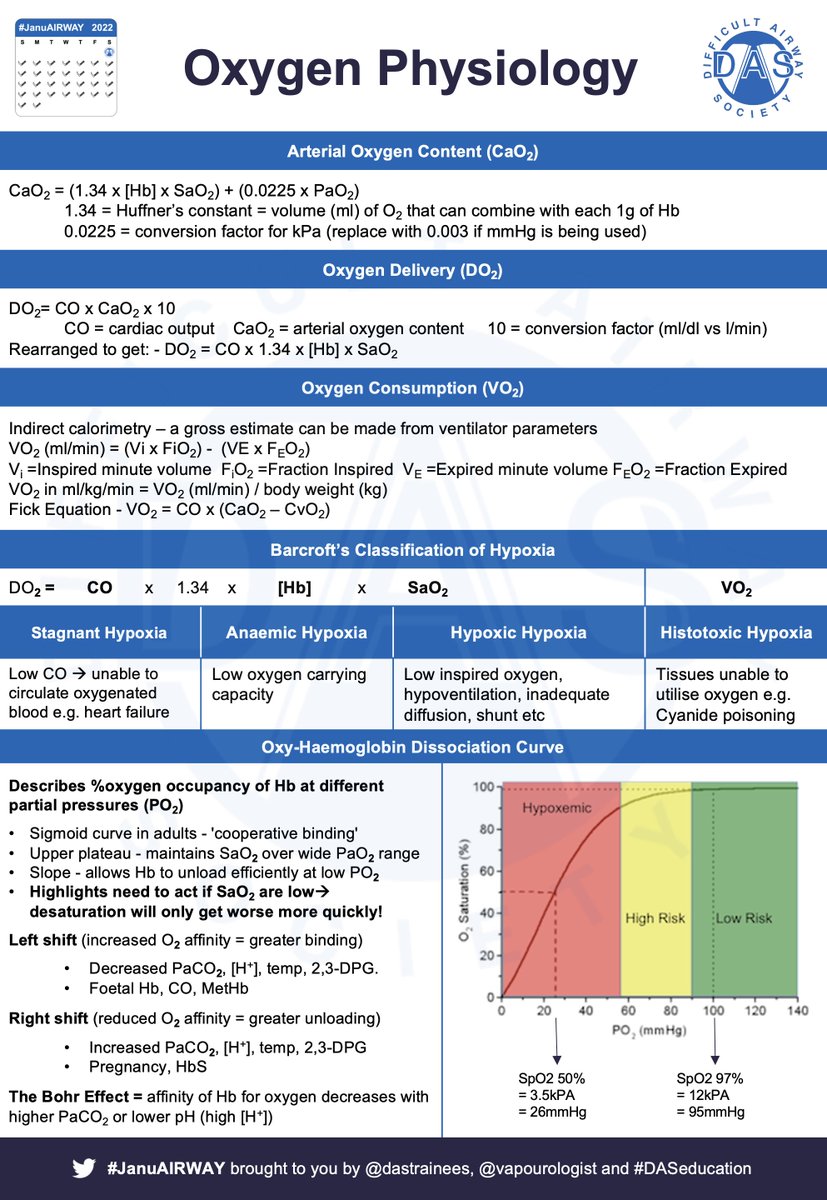
#JanuAIRWAY Day 2. Bedside Airway Assessment. NAP4 @doctimcook showed poor airway assessment contributes to poor outcomes. Thorough assessment = essential. Here’s a #OnePager on bedside tests to help assess for potential difficult airway management. #FOAMed #JanuAIRWAY 1/8 

Airway Assessment should be holistic & comprised of three basic parts: -
1) History - including review of previous management (if possible),
2) Examination - visual examination and bedside tests &
3) Investigations (we'll look at these more later this month).
#JanuAIRWAY 2/8
1) History - including review of previous management (if possible),
2) Examination - visual examination and bedside tests &
3) Investigations (we'll look at these more later this month).
#JanuAIRWAY 2/8
NAP4 gives us a structure to focus our examination on anatomical/procedural difficulty: -
1) Difficult bag mask vent.
2) Difficult SAD insertion
3) Difficult laryngoscopy
4) Difficult intubation
5) Difficult Front of Neck Airway (FONA)
6) Difficult extubation
#JanuAIRWAY 3/8
1) Difficult bag mask vent.
2) Difficult SAD insertion
3) Difficult laryngoscopy
4) Difficult intubation
5) Difficult Front of Neck Airway (FONA)
6) Difficult extubation
#JanuAIRWAY 3/8
Problem is that individually none of these are perfect, widely variable sensitivity & specificity. Possible improved when combined. But many unanticipated difficult airways are still missed - see this 2018 Cochrane review - cochranelibrary.com/cdsr/doi/10.10… #JanuAIRWAY 4/8 



A thought-provoking finding of Norskov et al's Danish Airway Database cohort study (…-publications.onlinelibrary.wiley.com/doi/full/10.11…) was that difficult mask ventilation was unanticipated in 94% of cases (808/857). #JanuAIRWAY 5/8
This is why airway assessment needs to be global. Airway assessment is more than just intubation! Here's a #OnePager showing some mnemonics that can help identify difficult procedures, following the NAP4 structure. #JanuAIRWAY 6/8 

Here are some papers / links that you might find interesting: -
a. pubmed.ncbi.nlm.nih.gov/10781266/
b. pubmed.ncbi.nlm.nih.gov/19293691/
c. pubmed.ncbi.nlm.nih.gov/15662057/
d. das.uk.com/content/video/…
If you have any others of interest, tweet them to us for inclusion next time!
#JanuAIRWAY 7/8
a. pubmed.ncbi.nlm.nih.gov/10781266/
b. pubmed.ncbi.nlm.nih.gov/19293691/
c. pubmed.ncbi.nlm.nih.gov/15662057/
d. das.uk.com/content/video/…
If you have any others of interest, tweet them to us for inclusion next time!
#JanuAIRWAY 7/8
Hope that helps. Tomorrow we'll start to examine the concept of the 'difficult airway'. See you then! #JanuAIRWAY 8/8
*Disclaimer: Inclusion of content (equipment, techniques and scoring systems etc.) in #JanuAIRWAY does not constitute DAS endorsement
*Disclaimer: Inclusion of content (equipment, techniques and scoring systems etc.) in #JanuAIRWAY does not constitute DAS endorsement
• • •
Missing some Tweet in this thread? You can try to
force a refresh




